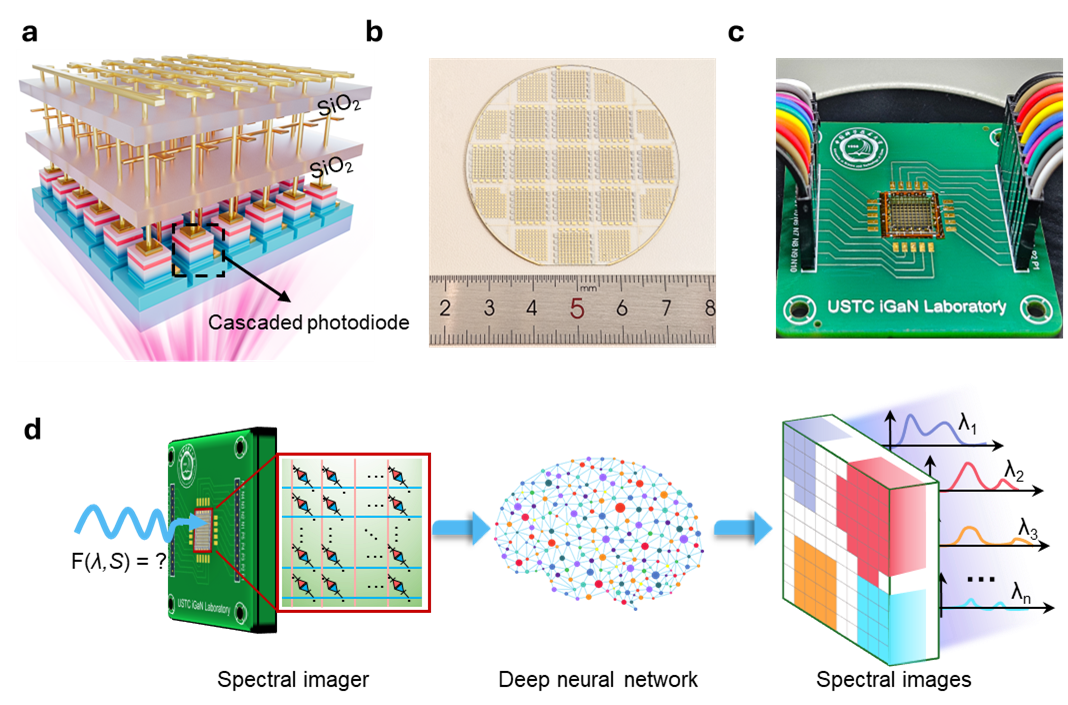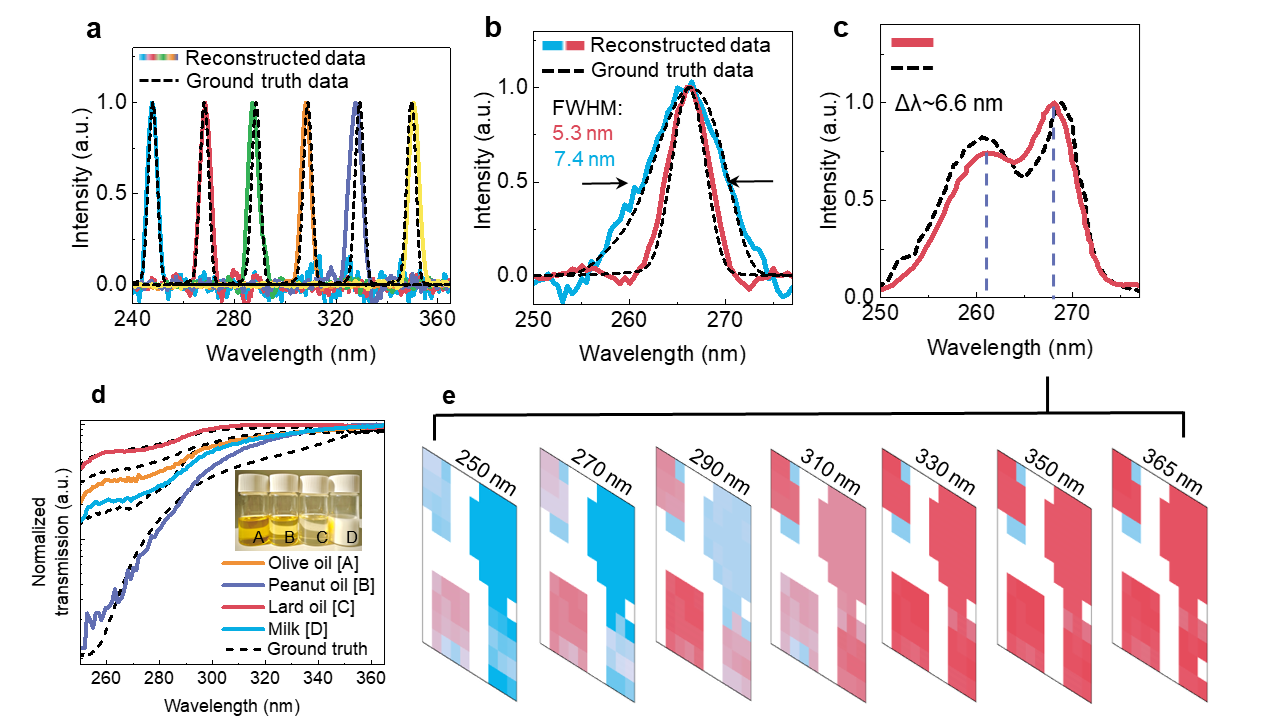Recently, the iGaN Laboratory led by Professor Haiding Sun at the School of Microelectronics, University of Science and Technology of China (USTC) of Chinese Academy of Sciences(CAS), together with a global collaborative team from Wuhan University, Zhejiang University and University of Cambridge, has successfully developed the first miniaturized ultraviolet (UV) spectrometer and realized on-chip spectral imaging. Based on a novel gallium nitride (GaN) cascaded photodiode architecture and integrated with deep neural network (DNN) algorithms, the device achieves high-precision spectral detection and high-resolution multispectral imaging. With a response speed on the nanosecond scale, it sets a new world record for the fastest reported miniaturized spectrometer. The work was published online in Nature Photonics on September 26, 2025.
Spectral imaging technology captures both spectral and spatial information simultaneously, enabling the precise measurement and identification of complex environments and targets. It has wide applications in material analysis, environmental monitoring, satellite remote sensing, and deep-space exploration. However, conventional spectral imagers rely on diffraction gratings and mechanical scanning, making them large, complex, and costly, and limiting their portability and integration. In particular, for deep-UV/UV applications crucial in biopharmaceuticals and organic molecule detection there has long been no viable solution.

Figure 1. Design and working principle of the miniaturized UV spectrometer. (a) Conceptual schematic of the GaN-based cascaded photodiode architecture. (b) Device structure consisting of two vertically cascaded asymmetric p–n diodes fabricated on a 2-inch wafer. (c) Chip-level integration through wafer bonding. (d) Workflow showing spectral reconstruction enabled by deep neural network algorithms.
To overcome this challenge, the iGaN Laboratory proposed a new GaN-based cascaded photodiode architecture (Fig. 1a) and developed the first UV spectral imager. The structure consists of two vertically cascaded asymmetric p–n diodes that can be fabricated as arrays on 2-inch wafers and integrated through bonding (Fig. 1b,c). By applying external bias, carrier transport exhibits wavelength-dependent behavior, enabling voltage-tunable bidirectional spectral response. With the aid of DNN algorithms (Fig. 1d), the device reconstructs unknown spectra with high accuracy (Fig. 2a–c). Operating across 250–365 nm, the device achieves ~0.62 nm resolution and <10 ns response time the fastest among all reported miniaturized spectrometers.
Using this device, the team successfully performed spatially resolved, single-shot imaging of organic liquid droplets, including olive oil, peanut oil, animal fat, and milk. Each pixel recorded wavelength-dependent photocurrent signals, generating a full three-dimensional dataset. After spectral reconstruction via neural networks, high-resolution spectral images were obtained, clearly showing the distinct UV absorption characteristics (Fig. 2d) and spatial distributions (Fig. 2e) of different organic substances. These demonstrations highlight the device’s potential application in molecular recognition and food safety testing. 
Figure 2. Performance and imaging demonstration of the spectrometer. (a–c) Spectral reconstruction results of incident light using the cascaded photodiode array combined with neural network algorithms. (d) Distinct UV absorption spectra of organic liquids including olive oil, peanut oil, animal fat, and milk. (e) Spatially resolved spectral imaging results, clearly distinguishing and mapping the distribution of different organic droplets.
This work presents and validates a new paradigm for miniaturized spectrometer/spectral imager and, for the first time, uses wide-bandgap nitride semiconductors for building such devices. Looking forward, by adjusting material composition and doping, or by introducing other compound semiconductors (such as CdS, ZnO, GaAs, and InP), the operational range of this device architecture could be extended from UV to visible and even infrared. Because the fabrication process is fully compatible with large-scale semiconductor manufacturing, the device dimensions can be further reduced to submicron or nanometer scales, enabling higher resolution at lower cost. The team anticipates that production costs could fall to as little as one-hundredth that of conventional spectrometers. Much like silicon-based CCD/CMOS technology enabled the widespread adoption of digital cameras, this GaN-based miniaturized on-chip spectrometer is poised to drive a new wave of industrial advancement in spectral imaging technology.
Paper link: https://www.nature.com/articles/s41566-025-01754-6
(Edited by Wu Yuyang, USTC News Center)